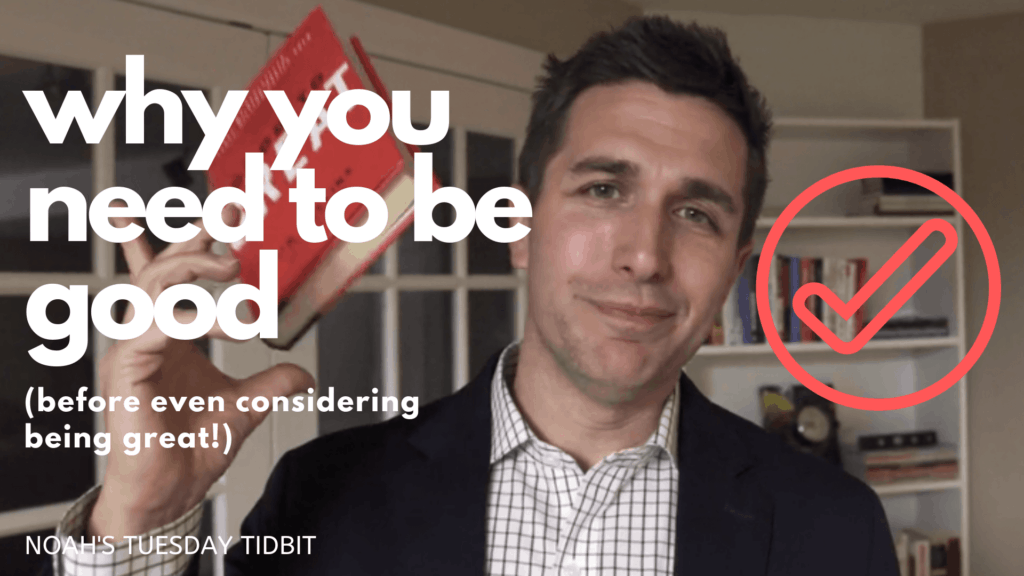’m trying something new in the Tuesday Tidbit ™ world, so please keep your responses coming to let me know what you think. In addition to doing companion videos for each tidbit (last week's tidbit/video is HERE, this weeks video HERE), I’m also trying different formats to help the ideas stick.
Let’s pick up last week’s Case Study.
You can read Part #1 here. The summary was that the company gave me a quote, changed it on day-of pickup, then told my assistant that they’d never given that quote (though we had an evidence trail to the contrary).
Case Study Continued….
By the time my assistant got through to a Carey supervisor, they had made up a cockamamie justification for a day-of 400% price increase by claiming that I (Noah) changed my incoming flight and was no longer on United Flight 618.
Madison said, “That’s impossible since Noah is communicating with me from United Flight 618.”
They fed us story after story, and they refused to budge.
They said the correct price was $484 even though my return trip with Carey was $144 (in line with the price we booked)
At this point, Amex Concierge got involved.
Alas, after about 20-30 minutes American Express got Carey to agree to honor the pricing which they said they finally saw in our emails.
Carey said they would offer a “One-time exception” for their mistake!
The outgoing trip was $188.
Look, you can’t sweat the small stuff, and if this error were about $20-40 bucks I wouldn’t have batted an eye, but this made no sense. So, note to Carey I guess – if you want to steal from your customers, take in smaller amounts.
In the meantime, I was googling and reaching out to Carey executives on LinkedIn. I sent a few messages. Two of them viewed my profile but neglected to respond to my requests.
What’s the point here?
The point is this.
I’m guessing – I’d be willing to wager – across Carey’s HQ and various locations there are posters on the wall describing the company’s core mission and value statements. Their website talks about their “uncompromising reliability and impeccable professionalism.”
Of course, as is the case with many organizations, they mean nothing — Diddly squat.
Employees don’t live by them.
They don’t do the right thing even when the “correct” answer to a customer related issue is obvious. Their people are poorly trained.
And of course, the best (or worst) of all, management is inept.
Let’s make no mistake. This is a failure of Senior Management. Their technology is flawed, outdated, and they’ve failed to provide adequate training to their people on the front lines.
My business coach used to write a column called DASM which stood for Dumb Ass Stupid Management.
Last week, Carey Limo took the award.
You can choose to have a great tagline.
You can choose to have written copy on your website that suggests unparalleled attention to detail and the highest standards of customer care.
But if nobody believes it, why would anyone act it? More importantly, if nobody even pretends to act on it, then why have it?
The more significant point is Carey exposed a weakness in their company, and this creates a massive opportunity for any competitor to eat their lunch.
Your Challenge For This Week:
Right now, Carey Limo is the most significant player in the game. They are the very definition of “the best of the worst.”
If you wanted to eat their lunch, based on this case study, how would you do it?
Would you focus on consistency (making sure that people believed that the price they quoted was the price they’d pay?)
Would you try to do it on service, by training your staff to not lie to your customers?
Would you do it by incremental value (stealing less from your clients than Carey does)?
Would you do it through better technology, to avoid the back & forth required during this excursion?
However you’d do it, it’s pretty clear that you could create a strategy that would eat their lunch.
So, the tough question – if somebody was going to eat your lunch, how would they do it?
What vulnerabilities do you have?
When was the last time you complete the Hierarchy of Horrors?
Could you categorize all your customer complaints, criticisms and feedback over the past year and find your vulnerabilities? If not, being able to get that information is a great place to start!
